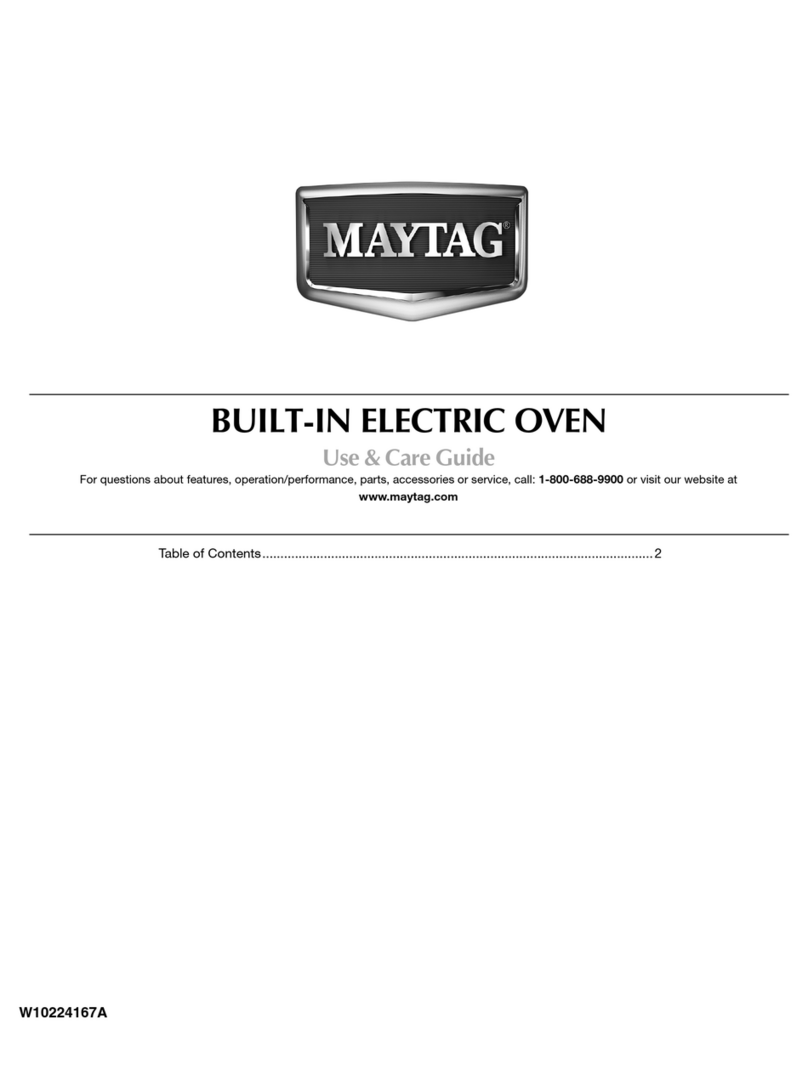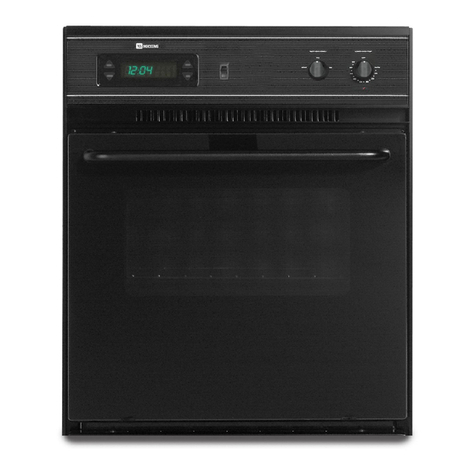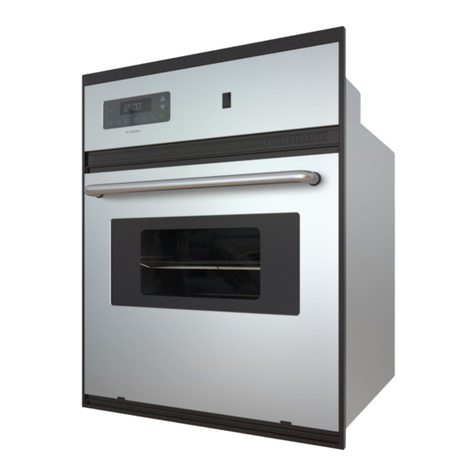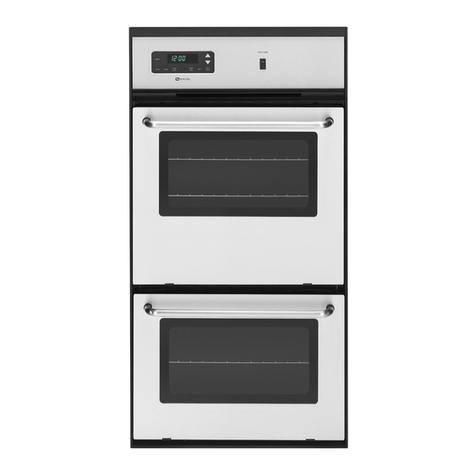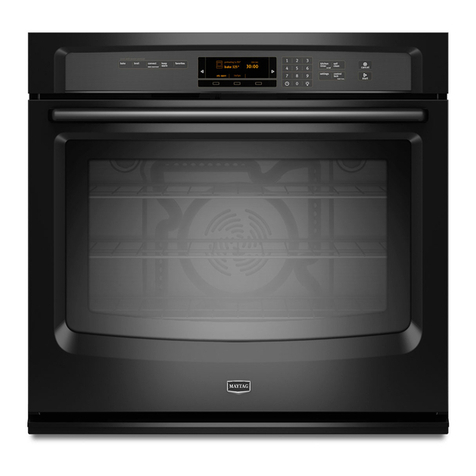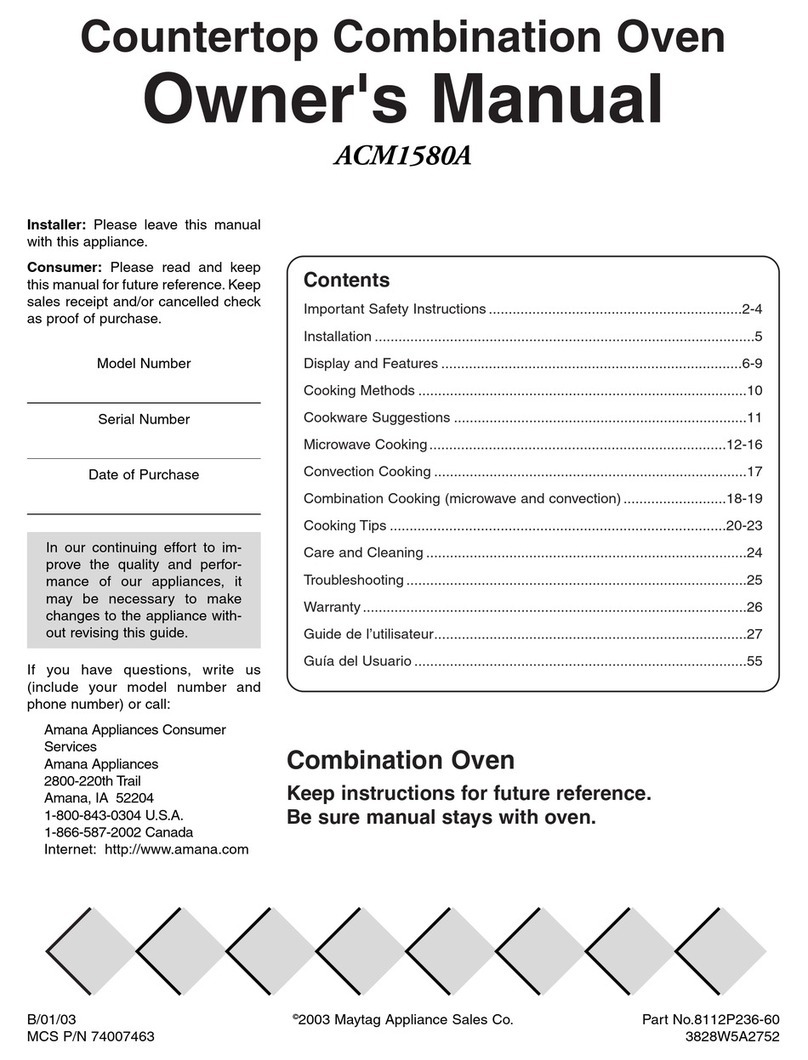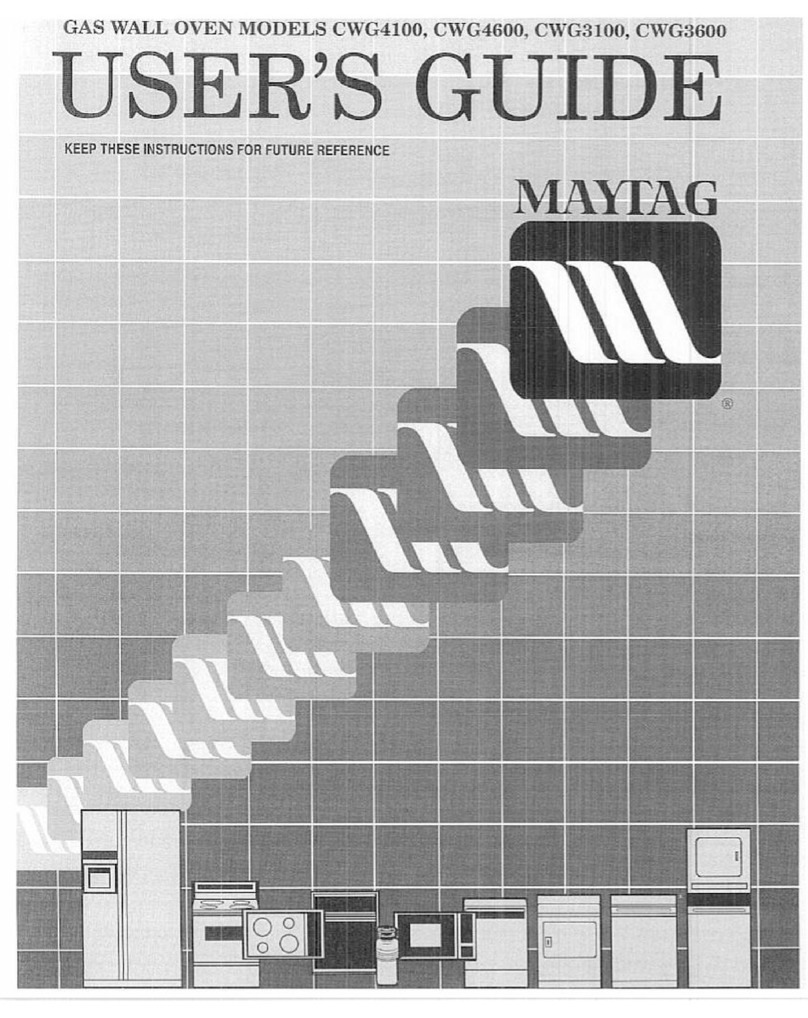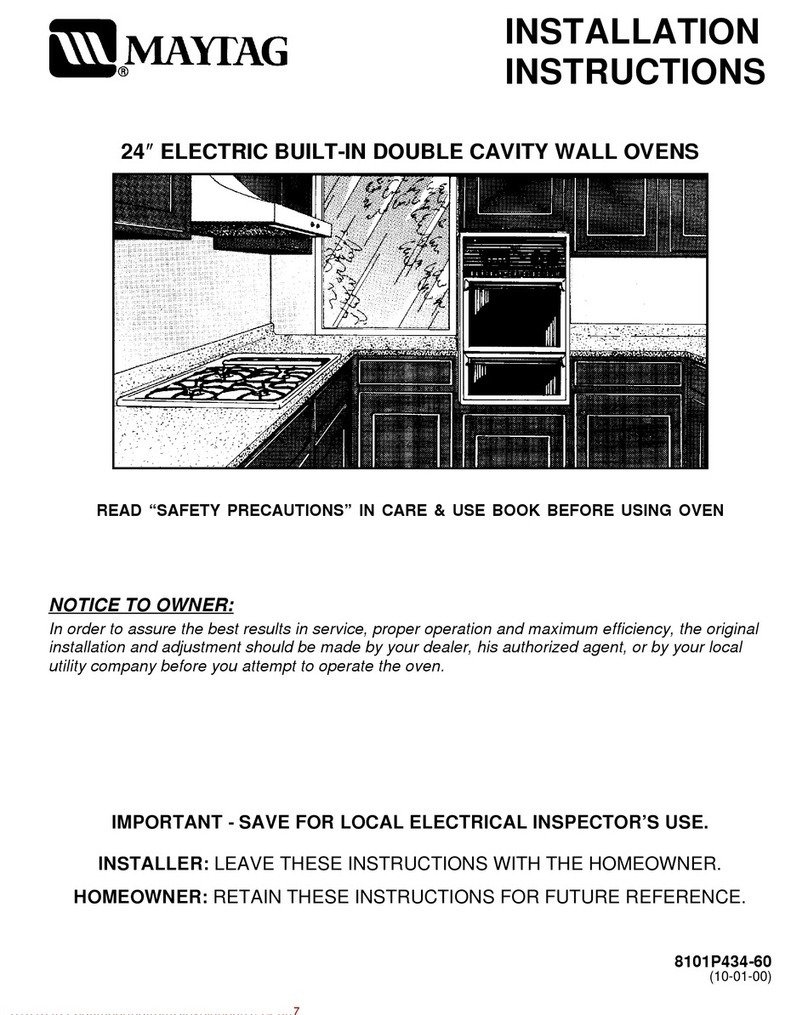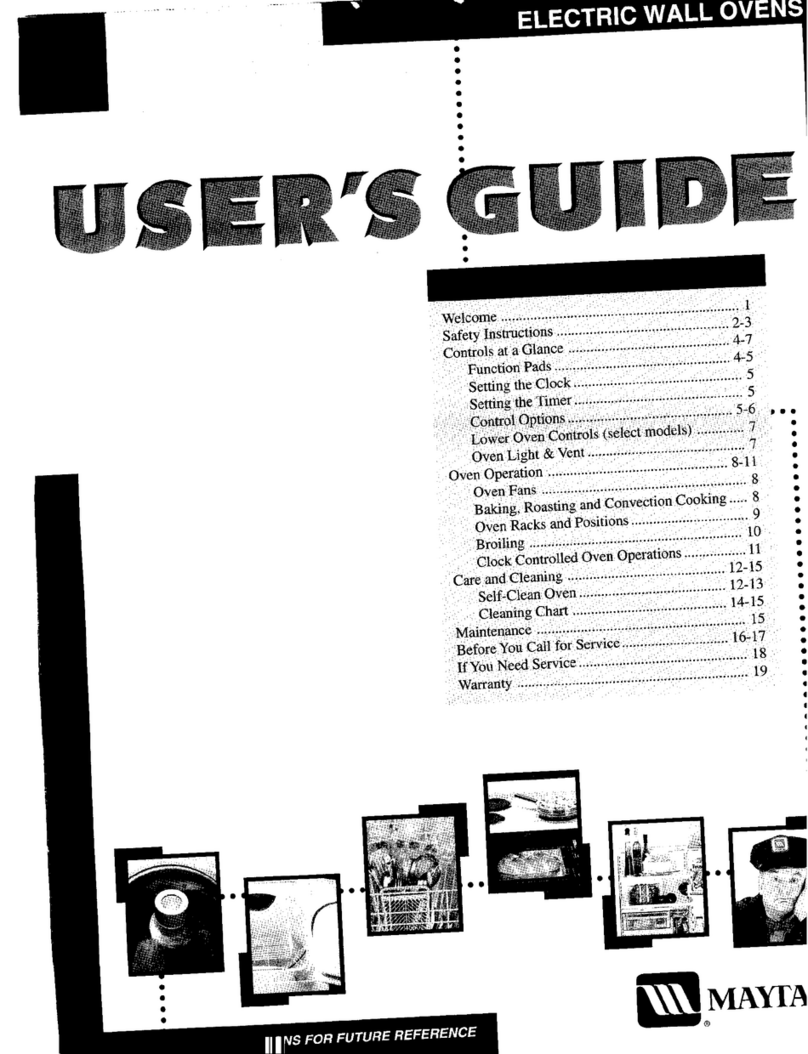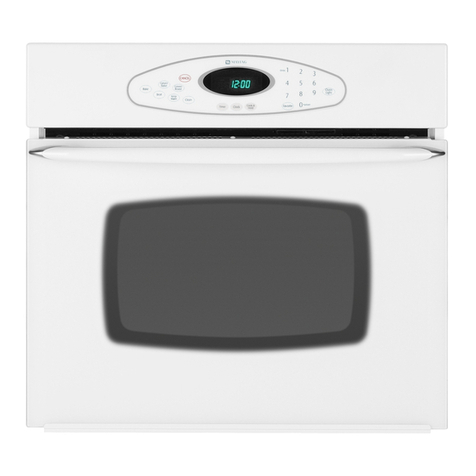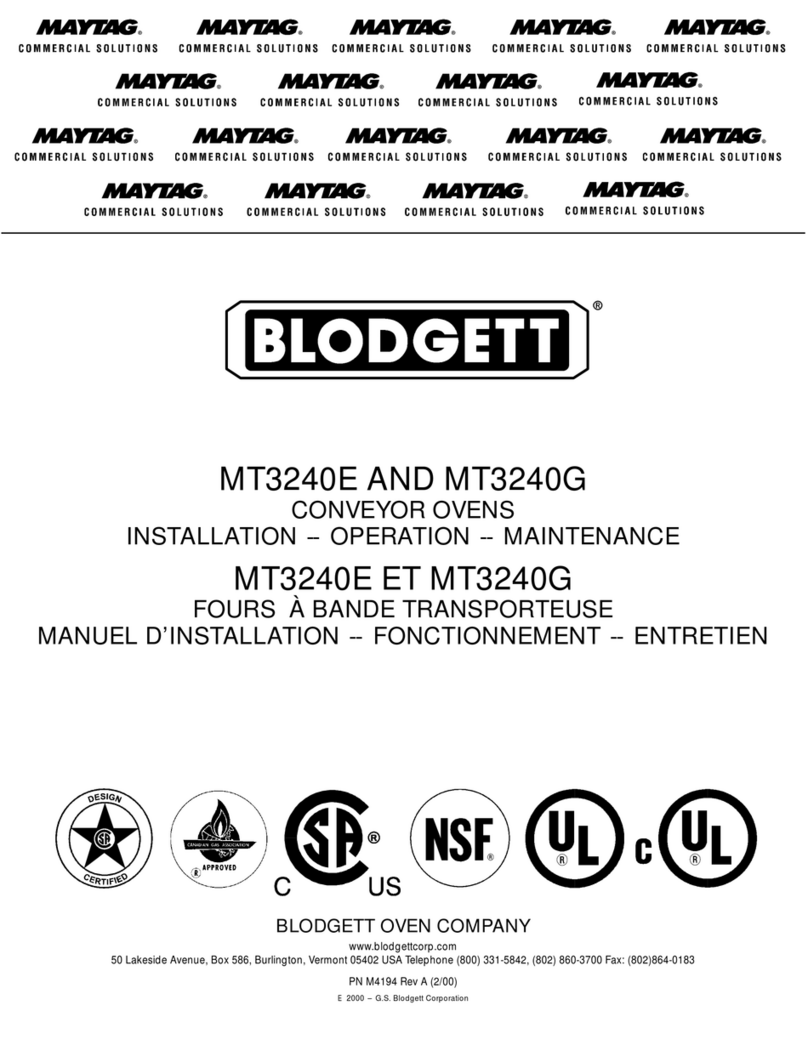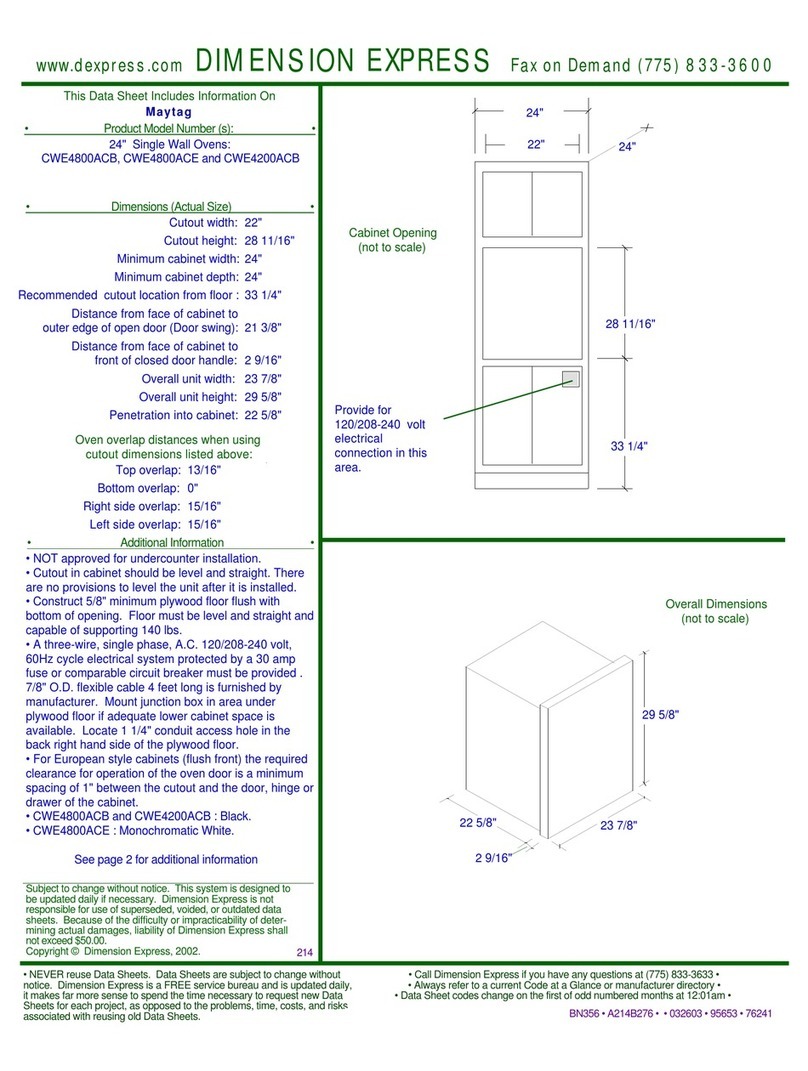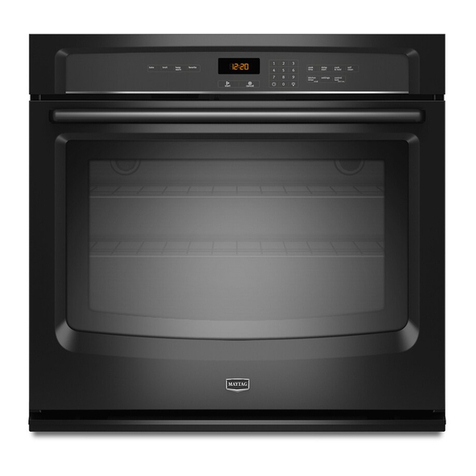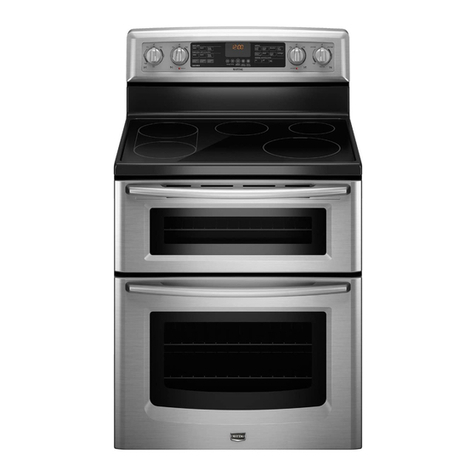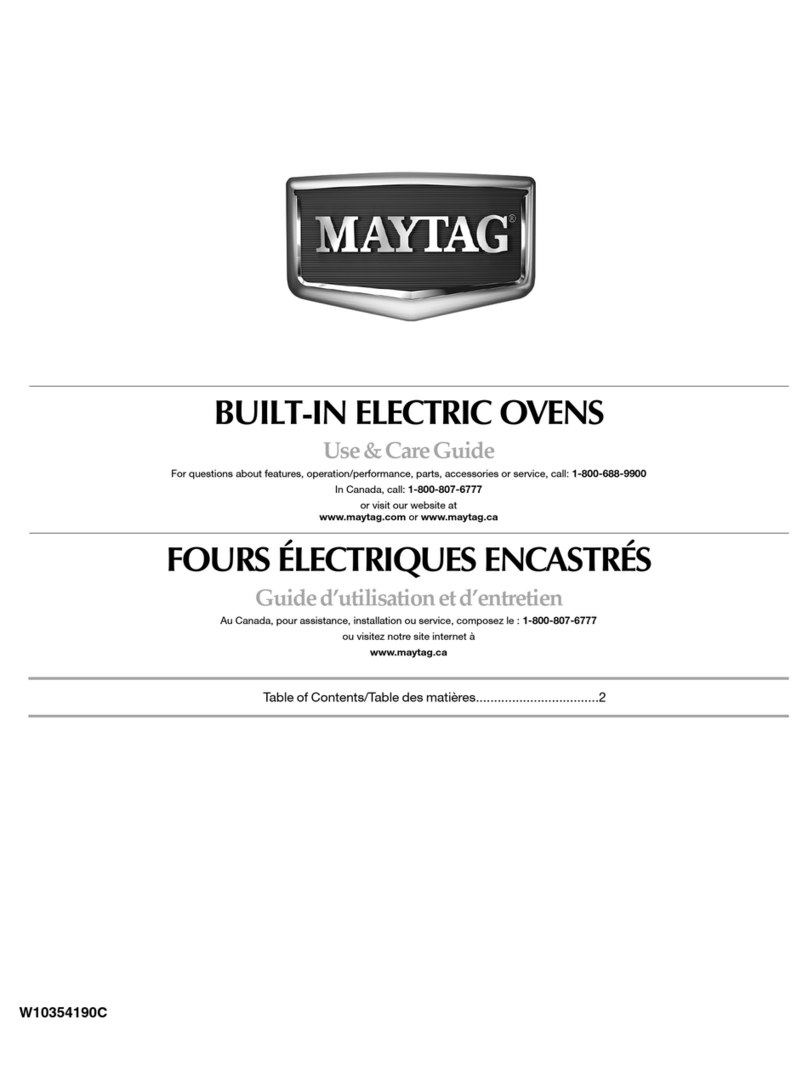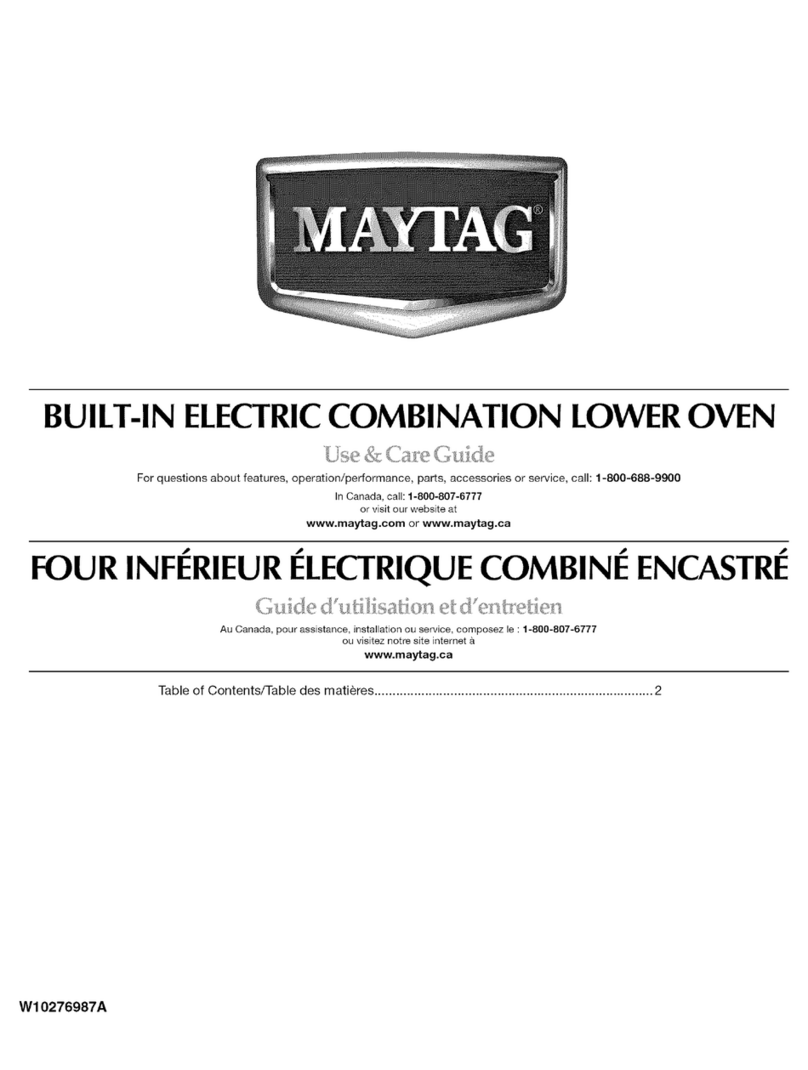SAFETY INSTRUCTIONS
GLAZED COOKING UTENSILS- Only certaintypes VENTILATING HOODS:
ofglass, glass/ceramic,ceramic, earthenware, or CLEAN VENTILATING HOODS FREQUENTLY -
otherglazedutensilsaresuitablefor range-topsew-Greaseshouldnotbeallowedtoaccumulateon hood
icewithout breakingdue tothesuddenchange intem- orfilter. When flaming foods under the hood, turn the
perature, fan off. The fan, ifoperating, may spread the flame.
IMPORTANT SAFETY NOTICE AND WARNING
UTENSIL HANDLES TheCaliforniaSafeDrinkingWaterandToxicEnforce-
SHOULD BE mentActof 1986(Proposition65) requirestheGover-
TURNED INWARD norof Californiato publish a listof substances known
AND NOT EXTEND to the State ofCalifornia to cause cancer or reproduc-
OVER ADJACENT tive harm,and requiresbusinessestowarn customers
SURFACE UNITS - of potential exposures to such substances.
To reduce the risk of
burns, ignition of flam- Usersof this appliance are hereby warned that when
mable materials, and the appliance is engaged in the self-clean cycle there
spillage due to unin- may besome low-level exposureto someof the listed
tentional contactwith the utensil,the handleof a uten- substances, includingcarbon monoxide. Exposure to
sil should bepositioned sothat it isturned inward, and these substances can be minimized byproperly vent-
does notextend over adjacent surface elements, ingthe appliancetothe outdoorsduring the self-clean
cycle.
DO NOT SOAK REMOVABLE HEATING ELE-
MENTS- Heating elements should never be im- DEEPFAT FRYERS;
mersed in water. Immersing element in water would Useextremecautionwhen movingthegrease kettleor
damage insulating material inside element, disposing of hot grease.
DO NOT TOUCH SURFACE ELEMENTS OROVEN
OVENS; ELEMENTS,AREAS NEAR ELEMENTS ORINTE-
USECAREWHEN OPENING DOOR- Let hot air or RIORSURFACESOF OVEN - Elementsmay be hot
steam escape before removing or replacing food. eventhough they are dark incolor. Areas nearsurface
elements and interior surfaces of oven may become
DO NOTHEATUNOPENED FOOD CONTAINERS - hot enough to cause burns. During and after use, do
Build-up of pressure maycausecontainertoburst and not touch or let clothing or other flammable materials
result in injury,contact heating elements, areas near elements or in-
terior surfaces of oven until they have had sufficient
time to cool. Among these areas are the cooktop, sur-
KEEP OVEN VENT DUCTS (located under rear ele- faces facing the cooktop, ovenvent opening and sur-
ment; rear corner of cooktep; between oven door and faces nearthis opening,oven door,and ovenwindow.
control panel of wall oven or on backguard) UNOB- Also, do not allow aluminumfoil, meat probes or any
STRUCTED.Blockage of vent prevents proper oven other metal object, other than a utensil on a surface
aircirculation and will affectoven performance. Avoid element, to contact heating elements.
touching ovenvent area while oven ison andfor sev-
eral minutesafteroven isturned off. Someparts ofthe ANTI-TIPBRACKET:
vent and surrounding area become hot enough to WARNING; To reducethe risk of tipping ef the appli-
cause burns, ance from unusual usage or by excessive loading of
the oven door,the appliance must be secured by a
PLACEMENTOFOVEN RACKS-Always placeoven properly installedanti-tip device. Tocheck if deviceis
racks in desired location while oven is cool. If rack installed properly: Use a flashlight and look under-
mustbe movedwhile hot, use care to avoid contact of neath range to see that one of the rear leveling legsis
potholder with oven element, engagedinthe bracketslot.Whenremovingappliance
for cleaning, be sure anti-tip device isengagedwhen
rangeis replaced.Theanti-tip device securesthe rear
leveling legto the floor, when properly engaged.
-2-
